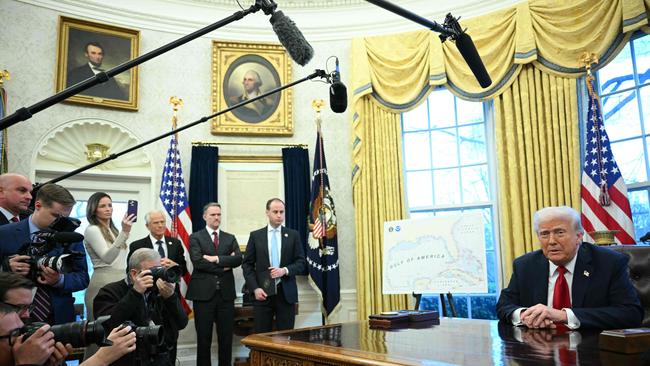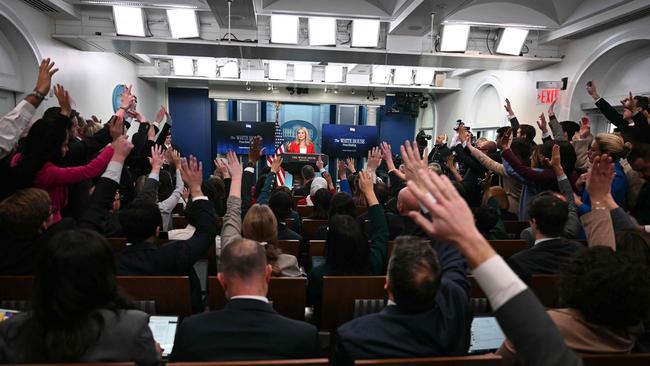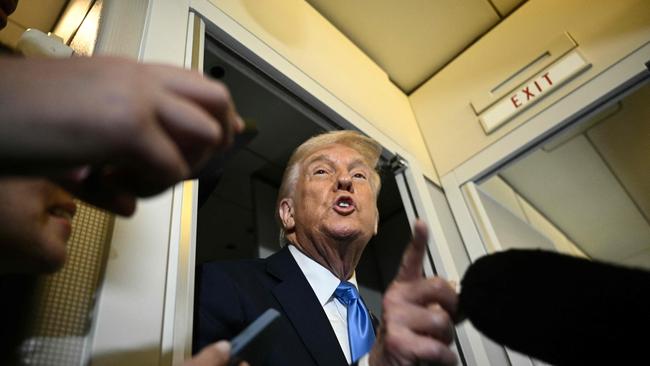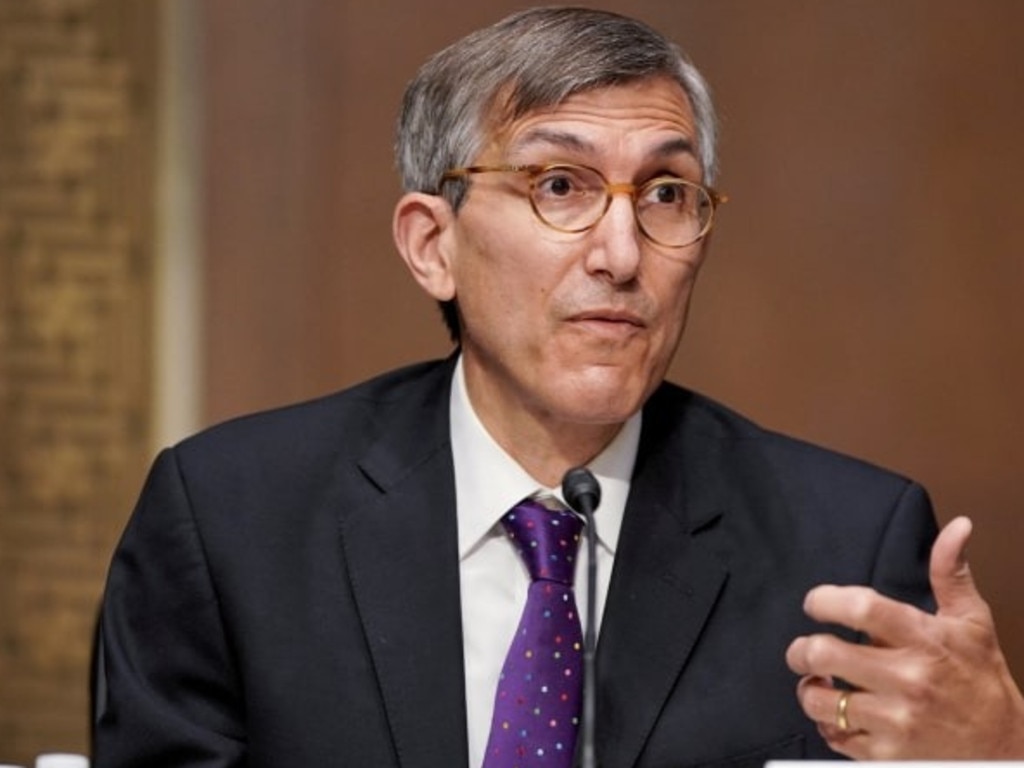Emboldened Trump squeezes traditional media
News organizations grapple with threats from a more combative Trump 2.0

President Trump’s chief of staff wanted the Associated Press to compromise.
After barring the AP from media events over the outlet’s refusal to change its style guidance on the Gulf of Mexico, White House chief of staff Susie Wiles met with AP Executive Editor Julie Pace to discuss the standoff, people familiar with the matter said. “You have to give us something,” Wiles said at the February meeting.
She asked if the AP could refer to the body of water along the US southern border as the Gulf of America and note with a comma that it was called the Gulf of Mexico elsewhere, the people said.
Pace told her that the AP wasn’t going to change its posture, and later sued. The White House continues to ban the outlet from Air Force One and the Oval Office, and on Tuesday an administration official accused the outlet in a court filing of a “sustained commitment to misinformation.” A spokesman for the Associated Press declined to comment.
News organizations were accustomed to Trump’s public criticisms during his first term. With more Americans turning to emerging formats like podcasts for news, legacy media outlets have become easier for the president to sideline. They are quickly learning that any perceived misstep or past gripe can come at a cost.
When Fox News anchor Bret Baier expressed support for the AP at a recent lunch between network TV correspondents and Trump, he noted that the outlet had taken the iconic photo of the president lifting his arm into the air after being shot in Butler, Pa. One of Trump’s staffers reminded the president that the AP hadn’t given the White House or the campaign the rights to the photo, people familiar with the gathering said.

Trump was noncommittal about whether he would change course on the ban, and reiterated that the administration hadn’t been given the rights to the photo.
The administration has developed a playbook for dealing with foes at a range of institutions, from the press to universities, entertainment companies and law firms. It is using litigation to exact settlements, threatening federal funding and forcing rollbacks in diversity, equity and inclusion practices using the power of the Federal Communications Commission.
“President Trump has changed the media game, and we are just following his lead,” White House press secretary Karoline Leavitt said. “We are proud of the historic changes we have made to the outdated traditional press coverage of the White House to better reflect the media habits of the American public.”
Some media observers say legacy outlets were ill-prepared for Trump’s new, more combative approach, even though much of the administration’s plan was laid out in the conservative policy agenda Project 2025—including taking charge of the White House press corps.
Mathias Döpfner, CEO of Axel Springer, which owns Politico and Business Insider, held prospective meetings with three Republican lobbyists recently, seeking help navigating the new administration, people familiar with the meetings said. Döpfner and other executives have discussed hiring a firm close to Trump after Elon Musk, who runs the Department of Government Efficiency, called government subscriptions to Politico “wasteful expenditure.”
Nancy Gibbs, who runs the Shorenstein Center on Media, Politics and Public Policy at Harvard University, helped orchestrate a dinner Thursday night of top news executives and others to discuss the current media environment. In an interview, Gibbs said she was pondering what a “collective defense” might look like for news outlets.
“Would collective action be effective? What form would it take with what goal? The first question is what would work,” said Gibbs, the former top editor at Time Magazine.
‘Worst-case scenarios’
In January, a group of about 60 news media executives and risk experts gathered in New York City to strategize about how to cover Trump’s second term. Attendees at “The Safety Summit” said they felt covering the Trump administration warranted measures beyond standard newsroom training for journalists.

Attendees brainstormed how to handle newsroom raids by law enforcement and what to do if journalists in the US on green cards are arrested while covering protests. Some executives discussed what to do if journalists were subpoenaed by Congress over stories they wrote. Journalistic work is typically protected by the First Amendment.
The Washington Post legal team brought lawyers from Williams & Connolly to talk to the reporting staff late last year about how to communicate with sources, handle documents and deal with legal threats in a new administration in which they expected more of them, people present at the meeting said. Newsrooms routinely offer training sessions on source communications and coverage. A Washington Post spokeswoman declined to comment.
Press pool changes
Trump’s second term is a far cry from the routine transition some in the Washington press corps had expected.
A number of White House Correspondents’ Association board members flew to West Palm Beach, Fla., in December to meet with campaign officials Taylor Budowich, Steven Cheung and Leavitt. The meeting, which the WHCA requested, as it does with each incoming administration, was cordial and the Trump team didn’t say or suggest that they were going to ban outlets or change the pool, people familiar with the meeting said.
The officials wanted to know how the WHCA chose the outlets for the White House briefing room, whether audience size and social-media audience size came into play and some other logistical questions, the people said. The leaders went back to Washington.
Two months later, Leavitt stunned the organization’s president, Eugene Daniels, when she announced publicly that the White House would take over the rotation. That sparked internal fallout for the organization, emails reviewed by The Wall Street Journal show.
Leavitt has also begun planning a potential event at the White House on the evening of the association’s annual dinner as counterprogramming to the party a little more than a mile away, according to people familiar with the plan. The potential April dinner, which needs Trump’s approval, would be for conservative lawmakers, as well as independent journalists and podcasters.





To join the conversation, please log in. Don't have an account? Register
Join the conversation, you are commenting as Logout